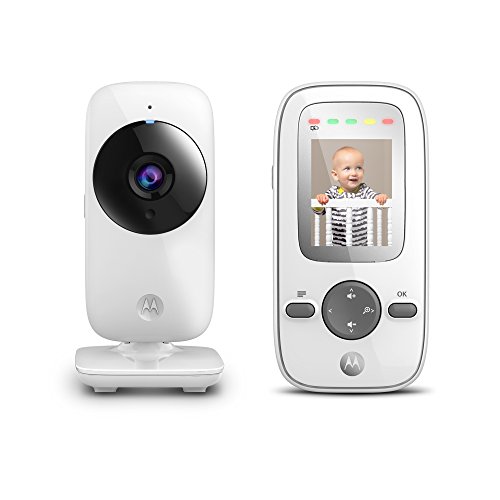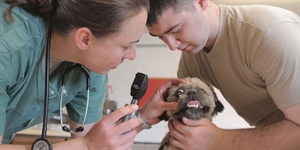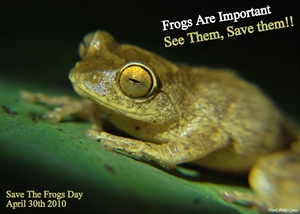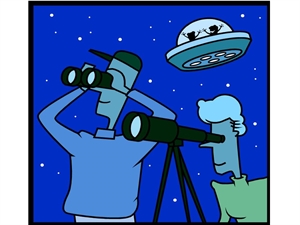World Veterinary Day 2024 is on Friday, April 26, 2024: Veterinary Technician.Information?
Friday, April 26, 2024 is World Veterinary Day 2024. World Veterinary Day 2011: OIE - World Organisation for Animal Health World Veterinary Day 2011: OIE
As an Amazon Associate I earn from qualifying purchases.
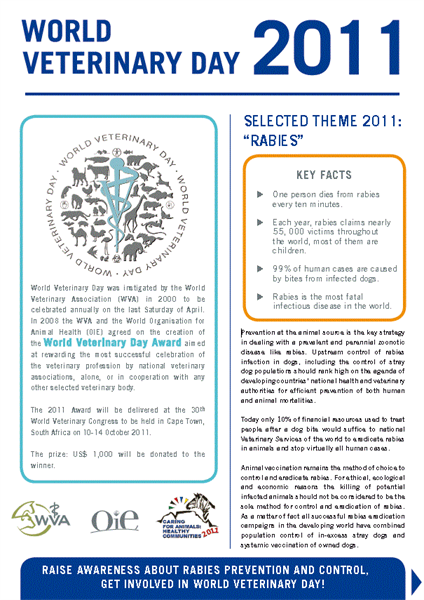
Veterinary technicians are required (in most states) to have a 2 year degree in veterinary technology from an AVMA accredited veterinary technology program, to have passed the Veterinary Technician National Exam and a state exam in order to be credentialed. They are also generally required to attend a set number of continuing education courses each year to keep up with changes in veterinary medicine. Veterinary technicians are educated in veterinary anatomy and physiology, pharmacology, animal husbandry, surgical assisting, anesthesia, medical nursing, diagnostics such as radiology and ultrasonography, clinical pathology, parasitology, medical terminology and record keeping, biological collection and sample handling and preperation, etc. They can also specialize in areas such as emergency and critical care, internal medicine, anesthesia, dentistry, behavior and equine nursing.
The American Veterinary Medical Association maintains a list of accredited degree programs on their website:
The daily workload can vary greatly depending on the type of practice you work in and the area of the country you are in. Most often the workload will be variable in any practice--some days will be like a wild rollercoaster ride while others are so boring and slow that you have a hard time staying awake.
A very general list of things that a veterinary technician would do would include collecting patient histories, collect biological samples (blood, urine, feces, etc), running diagnostic tests, monitoring and medicating hospitalized animals, assisting in surgery, administering and monitoring anesthesia, performing dental cleanings, providing treatment for outpatients as prescribed by the attending veterinarian, filling prescriptions, answering client questions on preventative medicine, disease processes, medications, etc, maintaining inventory, caring for surgical and medical equipment such as anesthesia machines, taking radiographs, entering medical records, etc.
Veterinary technicians earn between $23,000 and $48,000 a year based upon the most recent survey published. The state you live in, the type of facility you work in and your experience all play into what is typical income where you are. The low range is typically in the areas where veterinary technicians aren't required by law to be credentialed.
Credentialing is the recognition of advanced education or training and is granted in most states either through a state governing board, state veterinary professional association or state veterinary technical association. Registration, licensure and certification are all types of credentials and which one is granted just depends on who is granting it and what title is used in that state. In many states you cannot use the title "veterinary technician" or perform certain tasks unless you are a credentialed veterinary technician. Because laws governing veterinary technicians vary from state to state, you should contact your state veterinary technician association or veterinary licensing board to learn about the specific requirements for credentialing in your state.
Before enrolling in a veterinary technology program, it is a good idea to volunteer or take a job at a veterinary hospital to see what the job of a veterinary technician really entails. Many people think that it will suit them but find out differently once they start school. Having personal experience in a veterinary facility will also help you to excel in your classes by giving you real-world application for what you are learning.
Also, contact your state veterinary technician association. They can give you detailed advice on the requirements for being a veterinary technician in your state and also help you to choose an appropriate school
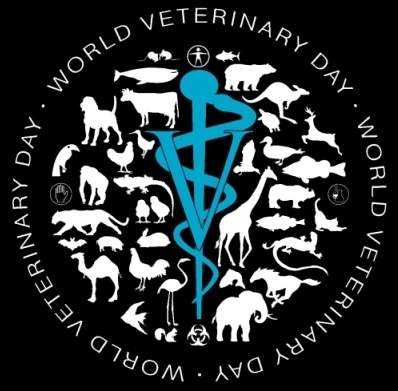
Veterinary Technician questions?
Veterinary technicians are required (in most states) to have a 2 year degree in veterinary technology from an AVMA accredited veterinary technology program, to have passed the Veterinary Technician National Exam and a state exam in order to be credentialed. They are also generally required to attend a set number of continuing education courses each year to keep up with changes in veterinary medicine. Veterinary technicians are educated in veterinary anatomy and physiology, pharmacology, animal husbandry, surgical assisting, anesthesia, medical nursing, diagnostics such as radiology and ultrasonography, clinical pathology, parasitology, medical terminology and record keeping, biological collection and sample handling and preperation, etc. They can also specialize in areas such as emergency and critical care, internal medicine, anesthesia, dentistry, behavior and equine nursing.
The American Veterinary Medical Association maintains a list of accredited degree programs on their website: …
In some states, the use of the title "veterinary technician" and the practice of veterinary technology is recognized as profession and licensure is required. In other states, veterinary technicians are registered or certified. The laws that govern veterinary technicians vary from state to state so for specific information on the laws a person should check their state veterinary practice act or contact their state veterinary licensing board. For Florida, that means contacting the state veterinary medical association.
The daily workload can vary greatly depending on the type of practice you work in and the area of the country you are in. Most often the workload will be variable in any practice--some days will be like a wild rollercoaster ride while others are so boring and slow that you have a hard time staying awake.
A very general list of things that a veterinary technician would do would include collecting patient histories, collect biological samples (blood, urine, feces, etc), running diagnostic tests, monitoring and medicating hospitalized animals, assisting in surgery, administering and monitoring anesthesia, performing dental cleanings, providing treatment for outpatients as prescribed by the attending veterinarian, filling prescriptions, answering client questions on preventative medicine, disease processes, medications, etc, maintaining inventory, caring for surgical and medical equipment such as anesthesia machines, taking radiographs, entering medical records, etc.
Before enrolling in a veterinary technology program, it is a good idea to volunteer or take a job at a veterinary hospital to see what the job of a veterinary technician really entails. Many people think that it will suit them but find out differently once they start school. Having personal experience in a veterinary facility will also help you to excel in your classes by giving you real-world application for what you are learning
Is this really the worlds smallest cat?
Hi there...the world's smallest cat in Guinness Book of world records is Mr. Peebles and is 3 pounds.
PEKIN, Ill. -- He lives in central Illinois, is two years old, weighs about three pounds and is the world's smallest cat. He's Mr. Peebles.
The cat's small stature has been verified by the Guinness Book of World Records. It officially lists him as the smallest living domestic cat.
Mr. Peebles lives in the Good Shepherd Veterinary Clinic in Pekin. The clinic's employees serve as collective co-owners.
"I was at a house doing vaccines on a dog and saw Mr. Peebles. He was very cute and I asked the owner 'Can I have him?' She said, 'Yes, if you can catch him,'" says Dr. Donna Sassman.
A doctor at the clinic said that Mr. Peebles has a genetic defect, and he's expected to hold onto his title for some time. Because he's already past the age when a cat reaches normal size, Mr. Peebles probably won't get any bigger.
"I have to feed him at least four times a day to sustain his weight," says Robin Sbendsen, co-owner of Mr. Peebles. "I do bring him to bed with me at night between my husband and I. And he curls up in my arms and sleeps next to my neck when it's cold. And one of his best habits, he'll lick me on the chin at night to give me a kiss."
The clinic said he was named after a ventriloquist's dummy on an episode of "Seinfeld."
Video of Mr. Peebles:
Here is another cat who may be able to break Mr. Peebles Guinness World record who weighs 29 oz and stands at 3" high (at the time of the video):
EDIT: Here's the link for everyone else to see that you posted: This appears to be digitally altered.






